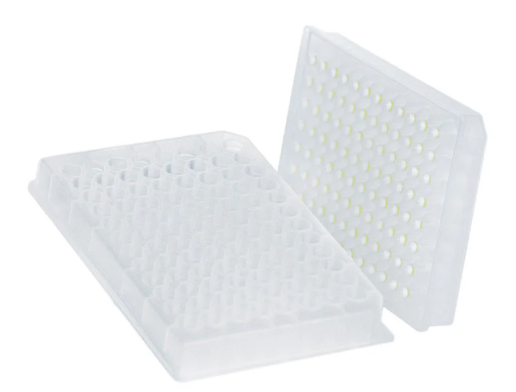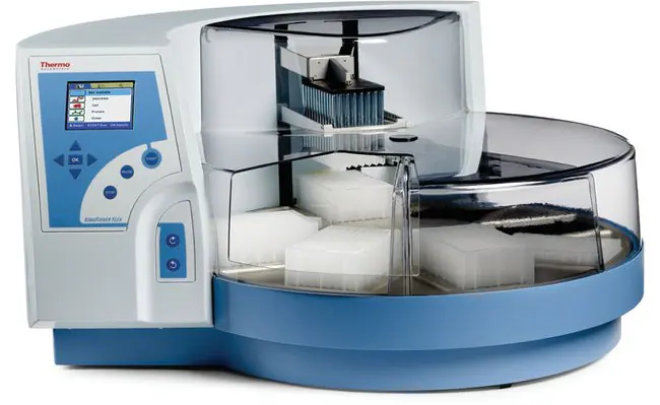RNA extraction is a crucial upstream step to many molecular biology analyses, such as northern blotting, reverse transcription-PCR, and Next-Generation Sequencing (NGS). These techniques are advancing our fundamental knowledge across diverse fields, including gene expression, transcriptomics, virology, and cancer research. With numerous RNA extraction kits on the market, choosing the right kit for your specific research needs can be a daunting task. The decision becomes even more critical when considering factors such as sample type, workflow efficiency, RNA isolation techniques, downstream applications, format requirements, and the amount of RNA needed for your experiments.
In this guide, we will walk you through some key criteria to help you pick the best RNA extraction kit for your project.
Sample Compatibility
All for One, or One for All?
The first step in finding the best RNA extraction kit is ensuring it works for your sample type. Many manufacturers offer specialized kits tailored for various sample types, such as cells, tissues, blood, or even environmental samples like soil or water. These kits are equipped with specific reagents, buffers, and protocols designed to address the unique challenges posed by different sample matrices. For example, RNA extraction from tissue samples often requires mechanical disruption or more robust lysis buffers to release RNA, while RNA extraction from blood samples may need additional steps to remove proteins and hemoglobin.
On the other hand, if your research requires working with a wide range of sample types, a more versatile kit may be the better option. These all-in-one kits often feature more potent lysis buffers and include steps like proteinase K treatment to ensure that even tough-to-lyse samples yield high-quality RNA. Making sure that the chosen kit meets the specific needs of your sample type, whether for a targeted application or broader use, is imperative for maximizing the integrity and yield of your RNA.

Figure 1. The type of sample you work with is often the first consideration when picking an RNA extraction kit.
Comprehensiveness
The Secret Ingredients to RNA Extraction.
It is important to check whether the RNA extraction kit provides all the components you need for a smooth workflow, from sample preparation to RNA purification and, ultimately, downstream analysis. While most commercial kits focus on RNA purification, they may lack crucial components for sample preparation, such as mechanical disruption tools (e.g., bashing beads for homogenization) or enzymes (e.g., proteinase K for tissue digestion). Though these are not always necessary for RNA extraction from cells or other simpler sample types, you may need to source them separately for more complex samples like tissue, which can add time, cost, and complexity to the workflow.
Consideration of your downstream applications is equally critical when choosing an RNA extraction kit. For example, techniques like Next-Generation Sequencing (NGS) have strict requirements for RNA integrity (e.g., RIN), purity readings (e.g., OD260/280 ratio), and demand that samples be free from genomic DNA contamination. While many RNA extraction kits do not include optional DNase treatment steps to remove genomic DNA, this can be a crucial factor for your downstream experiments, where it could affect results and lead to inaccurate conclusions. If the kit does not meet the needs of your downstream experiments, you may need to take extra steps, such as cleaning and re-concentrating the eluate, which not only adds time and effort but can also reduce overall RNA yield. This is why it is crucial to select an RNA extraction kit that includes all the components your workflow needs from the start to finish, which can save you from unnecessary headaches and wasted samples.
Formats
Tailoring Your Tactics − From Low to High Throughput
The format of the RNA extraction kit is another key factor in your decision-making process. Kits typically vary in terms of their sample input and binding capacity, which need to be considered based on the sample type and downstream analysis. Sometimes you may prefer a kit of higher capacity in order to process more samples in one prep; sometimes you only need a low-capacity kit to concentrate a small input in a low volume. It is also important to remember that overloading a kit's capacity can lead to inefficient extraction and compromised RNA yield and purity, so it is essential to choose an RNA extraction kit that matches the input and RNA content of your samples.
RNA extraction kits also come in various formats to cater to different experiment scales. Single-column formats are ideal for low-throughput labs or for extracting RNA from individual samples. For high-throughput RNA extraction, plate-based formats (e.g., 24-, 96-, or 384-well) or magnetic-bead workflows may be more suitable, allowing for the simultaneous processing of many individual samples. For max efficiency, choose a format of the RNA extraction kit that aligns with the scale of your workflow to optimize time and resource use.



Figure 2. Common formats of RNA extraction kits include single-columns (left), plates (middle), and magnetic-bead-based workflows on automated platforms (right).
Sensitivity
Small Samples, BIG Discoveries
If your sample input is small or contains a low amount of nucleic acids, the sensitivity of the RNA extraction kit becomes critical. Kits designed for high-sensitivity applications will ensure efficient recovery of even trace amounts of RNA. This is especially important if you are studying RNA in samples such as single cells, rare cell populations, liquid biopsies, and others. Additionally, choosing a kit that allows for small-volume elution can help increase the concentration of your extracted RNA, which is crucial for downstream processes like quantitative PCR or Next Generation Sequencing (NGS), where requirements of nucleic acid concentrations need to be met.
When it comes to column-based RNA extraction methods, almost every provider has their own “spin”. The design of the column and its matrix dictates many aspects of the extraction, such as maximum (and minimum) input, binding capacity, elution volume, yield, and concentration. One of the most advanced spin-columns can elute in as low as 6 microliters, making it possible to acquire highly concentrated RNA, even from a single cell. Sometimes, this is sufficient to bypass the need for an extra concentration or amplification step downstream.

Figure 3. For example, a thicker column matrix (left) would require a higher elution volume than a smaller matrix (right) to efficiently elute, affecting final sample concentration.
Also, when selecting an RNA extraction kit, it is crucial to be mindful of the RNA size cut-off of that kit. Some kits have higher cut-offs, for example, 200 nucleotides (nt), which means they will miss smaller RNA species like miRNAs and siRNAs. Without this awareness, you may unknowingly introduce bias to your analysis, missing critical information from small RNAs that could affect your results. On the other hand, certain kits are designed to capture small RNAs down to 17 nt alongside regular-sized RNAs, ensuring that you can obtain a comprehensive profile of all RNA species in your sample. By choosing the right RNA extraction kit, you can avoid missing important RNA fragments and achieve a more complete understanding of your biological sample.
Ease of-Use
“The Beauty of Science is to Make Things Simple.”
Speed and ease-of-use are also important considerations, especially if you routinely perform RNA extractions. Some RNA extraction kits boast similar results, but it is essential to ask practical questions, such as “How easy is the protocol to follow?”, “How long does it take to process a batch of samples?”, and “How well-written and clear is the User Manual?”. While some protocols take longer to perform due to being outdated or overly complicated, there are kits that offer rapid protocols, enabling RNA extraction in as short as 10 minutes. When choosing an RNA extraction kit, keep in mind that kits with simpler and more user-friendly steps are more likely to lower the chance of error and give consistent results, reducing the need for extensive optimization or troubleshooting.
Only the Best Will Do.
When it comes to RNA extraction, choosing a reliable, efficient, and high-performing kit is crucial for research success. Zymo Research has developed a line of industry-leading RNA extraction kits - the Quick-RNA™ kits, designed to address common challenges of RNA isolation techniques. These kits empower researchers by delivering high yields of DNA-free, NGS-ready RNA from a broad range of sample types in a matter of minutes.
The versatility of the Quick-RNA™ Kits makes them suitable for diverse sample types, including cells, tissues, and biological fluids. They come fully equipped with essential components like DNase I, DNA/RNA Shield*, and proteinase K*, ensuring the integrity and quality of your RNA for downstream applications like Next Generation Sequencing (NGS). Moreover, they offer unmatched sensitivity, capable of recovering RNA from as little as a single cell, while efficiently isolating even the smallest RNAs, down to 17 nucleotides. With low elution volumes (as little as 6 µl in the Microprep format), these kits guarantee high RNA concentration and purity, streamlining your workflow from start to finish.
*Supplied with the Quick-RNA™ Miniprep Plus

*RNeasy® is a registered trademark of Qiagen GmbH
Selecting the right RNA extraction kit requires careful consideration of factors such as sample compatibility, workflow completeness, formats, sensitivity, and ease of use. With Quick-RNA™ Kits, you get a comprehensive solution that meets these demands, helping you save time, resources, and avoid unnecessary complications, while consistently achieving high-quality research results. Explore the best RNA Extraction Kits today!
